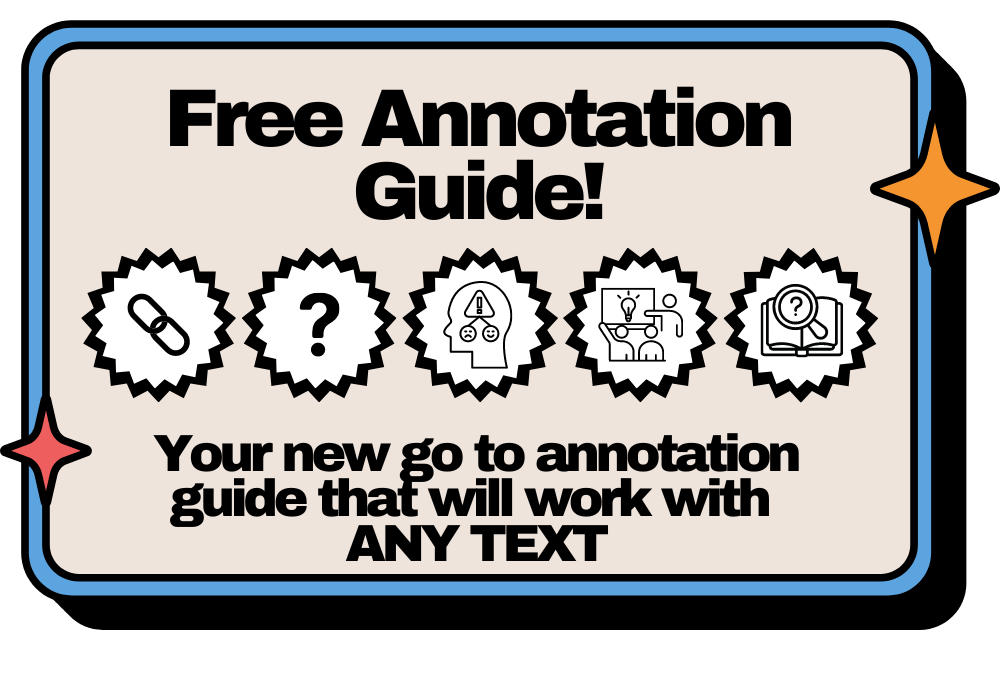The Frayer Model is making a comeback and I am here for it! When it comes to teaching vocabulary, we have to stop pretending that memorization equals comprehension. Ditch your flashcards and dictionary definitions and make room for the Frayer Model: a versatile graphic organizer that bolsters meaningful comprehension and retention of ALL the new words and concepts your students will tackle in your classroom this year.
What is the Frayer Model?

Definition: Students will provide a definiton of the word. However, students should not copy the dictionary definition word for word. Instead, have students consider summarize these “offical” definitions in their own words (in approachable language that is easy to understand). This stepsets the foundation for students to make sense of the meaning behind the target word.
Characteristics: Students will list key attributes or qualities associated with the word. This step encourages students to go beyond the dictionary definition and explore the depth and breadth of the target word or concept.
Examples: Students will provide real-world examples to demonstrate the word’s usage. These examples should llustrate how the word is used in context, making the word’s meaning more tangible and relatable. Good examples will add depth to the students’ understanding and showcase the target word’s application in different scenarios.
Non-Examples: Students will identify similar words that do not fit the word’s definition. This step helps students develop a clear contrast between the target word and related terms, thereby reducing confusion and reinforcing their comprehension.
Let’s Look at the Frayer Model in Action
In our narrative writing unit, my students study the art of suspense and how authors are able to achieve suspense in literature. Authors have to employ specific strategies to pull off that same uneasy feeling you would experience in front of a TV screen. This unfamilarity with the elements of suspense in writing (as opposed to film) makes it a perfect target word for students to analyze using the Frayer Model.

Frayer Model Example: “SUSPENSE”
Definition:
When you look up “suspense” in the dictionary, you’ll get a few definitions from Google and different dictionary adaptations (as you would for most words). The definition shown above is simply a combination of the relevant explanations that apply to the word. This summarization step turns a mindless copy/paste task into an exercise of critical thinking. Students are forced to consider all definitions before scribing their own version.
Characteristics:
Here, students are able to answer the question: “How do authors create suspense?” or in other words, “What features of suspense should I be looking for?” At this point, they would have read a variety of short stories that showcase authors’ strategies for creating suspense. The answers above describe these attributes.
Examples:
Context is key. In some instances, you would be able to use “suspense” in a sentence in order to demonstrate its meaning. However, it would be hard to create a sentence that highlighted a true understanding of what suspense means in literature. For example, “The Tell-Tale Heart is a suspenseful short story.” This might be a true statement, but even if you are familiar with the story, this sentence doesn’t explain what makes the story suspenseful. To combat this, students would want to show examples of how an author would create suspense. “Having the police respond to a disturbance call and chat with the killer while they unknowingly stand above a buried body.” would have also been a good example.
Non-Examples:
Many students (and teachers) will confuse this step with “antonyms”. While sometimes mentioning the opposite of the word can be beneficial to understanding the word’s meaning, in this case it is not. Neither would listing off other genres of writing: romance, comedy, drama. The best way to initiate this step is to consider what people might mistakenly assume relates to the target word. For example, shock and suspense often get incorrectly categorized together. However, “suspense” requires giving the audience or reader information, whereas “shock” is a lack thereof. With suspense, readers may be asking a lot of questions, but they are never confused… just waiting-anxiously waiting
Why Should You Use the Frayer Model in Your Classroom?
The Frayer Model is a powerful tool for teachers to enhance students’ vocabulary understanding, critical thinking, and reading comprehension. By actively engaging with words through the different components of the Frayer Model, students will not only deepen their understanding of words, but they will also feel empowered to express themselves more effectively in their writing and discussions.



